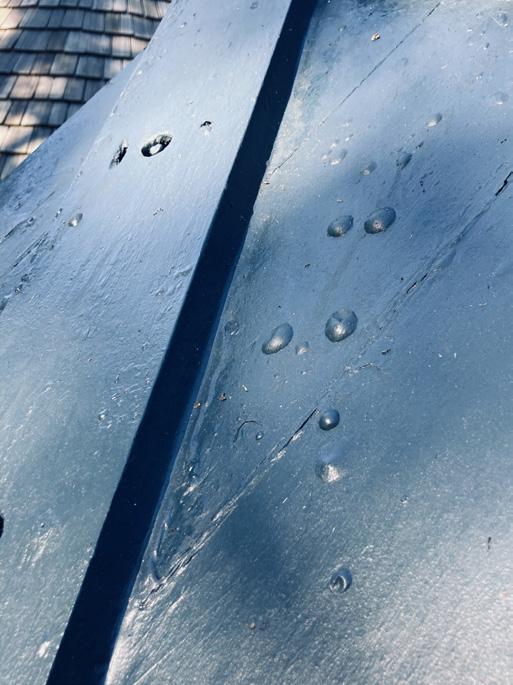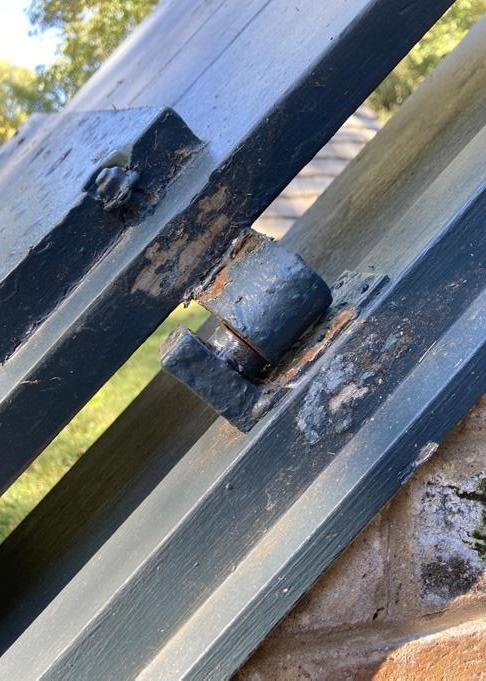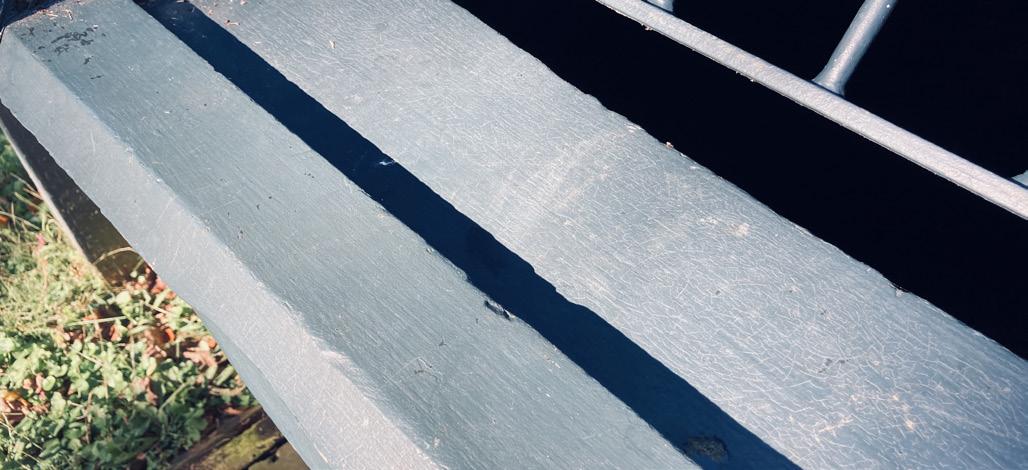
1 minute read
Conclusion
water and allow it to dry entirely before reapplying a fresh limewash coating. 48
Ice Houses.
Advertisement
When assessing the Ice Houses, the painted surface conditions discovered were crazing, rust jacking, and solvent blistering. Crazing is listed as a “class II” in terms of surface condition severity. Crazing is described as microcracking of small hairline cracks appearing on the paint layer’s top surface, which is caused when there are multiple layers of paint on top of the wooden substrate, which causes the paint not to expand and contract with the wood.49
Crazing can occur if the surface was not adequately prepared before painting, or there are multiple layers of paint, or poor quality of paint was used, or excessive exposure to the sun. Over time, the cracks will become more profound as the wood fights to contract and expand cycles, causing moisture to enter into the cracks and be absorbed into the wood, causing the wood to swell even more.50 The paint will then be considered “class III” due to cracking and alligatoring. Based on the images, the wood’s surface was not prepared, exposed to the sun, and multiple paint layers.
The other mentioned condition was the rusted hinges of the ice houses’ doors. The accumulation of corrosion and rust has caused the surrounding painted surface to become discolored or chip away. If the hinges are historic hardware, it is best to restore the hinges by cleaning and removing the rust. However, if the hinges are not of historical significance, then replace them with stainless steel hinges. The last paint failure to mention is the blisters. Generally, solvent blisters develop if the paint dries too quickly before the volatile solvents could evaporate.51 Alternatively, other forms of blisters can accumulate if the surface is improperly prepared or if the multiple layers of paints are incompatible, causing water or
48. National Parks Service, “Preservation Brief 10: Exterior Paint Problems on Historic Wood-
49. Weaver, “Painting and Coatings,” 222. 50. National Parks Service, “Preservation Brief 10: Exterior Paint Problems on Historic Wood-
figure 16. Paint blisters figure 17. Rust-jacking






